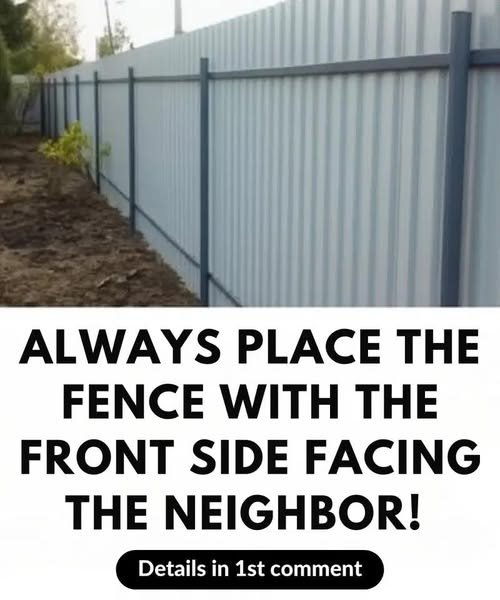When building a fence between properties, most homeowners think about practical concerns like marking their boundary lines, creating privacy, or improving security. But there’s one important detail that often gets overlooked and can make a big difference in the long run: the more attractive or “finished” side of the fence should always face your neighbor.

While it may seem like a minor aesthetic choice, it actually plays a big role in how you’re perceived by your neighbors, whether you’re following local regulations, and how your property looks to the public. Let’s start with one of the most important reasons: being a good neighbor. When you face the nicer side of the fence outward, it shows thoughtfulness and respect for those living next to you. It tells them that you care about maintaining a pleasant shared environment and aren’t just concerned with your own space. It may sound like a small gesture, but it can go a long way toward building or maintaining goodwill. On the flip side, putting the unattractive structural side of the fence toward your neighbor can be seen as inconsiderate, and may create tension or resentment over time.
What began as a simple home improvement project could quickly turn into an ongoing source of neighborly friction. Being mindful of how your actions affect those around you helps prevent unnecessary drama. There’s also the issue of legality to consider. In many places across the United States, building codes and homeowner association (HOA) rules clearly state that the finished or more attractive side of a fence must face outward toward the adjacent property or public view. These rules exist to keep neighborhoods looking tidy and cohesive. If you ignore them and install your fence the wrong way, you might face consequences—such as being ordered to rebuild the fence correctly or even being hit with fines.
That means what seems like a shortcut or a cost-saving decision at first can end up being a major headache that costs more time and money than expected. A fence that follows both social norms and local regulations is not only more responsible, but it also protects you from unwanted legal trouble. On top of those reasons, there’s the impact on curb appeal. If your fence is visible from the street or sidewalk, the way it looks matters. A neat, well-designed fence facing outward adds to the attractiveness of your home and can even boost your property’s value. Buyers and appraisers alike take note of exterior features, and a professionally installed, neighbor-facing fence gives off the impression that the entire home has been well cared for.
In contrast, exposing the posts, brackets, and support beams to your neighbor—or the street—can make your yard look unfinished or even sloppy. If you really want to take the extra step, you can also consider building a “good neighbor” or double-sided fence, which is designed to look the same on both sides. This approach eliminates the question of who gets the “bad” side and reflects an equal consideration for both parties. While it might cost a bit more upfront, it can save you from any back-and-forth later on and presents a clean, symmetrical look. Before beginning any fence installation, it’s a good idea to double-check local building codes, talk to your neighbor about your plans, and make sure the fence is placed correctly on your property line. Even if you’re paying for the entire project, keeping communication open shows transparency and respect. Once the fence is up, don’t forget to maintain it. A well-kept fence continues to reflect positively on you as a homeowner, while a neglected one can quickly become an eyesore or source of complaints. In the end, always placing the finished side of your fence facing your neighbor is more than just a design decision—it’s a sign of thoughtful homeownership. It strengthens neighborly relationships, avoids legal and regulatory issues, improves your home’s outward appearance, and shows you’re committed to maintaining a respectful and attractive property. Taking the time to do it right the first time is an investment in both your home and your community.





